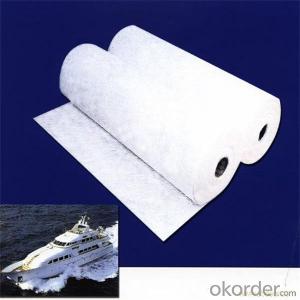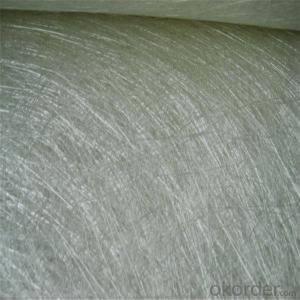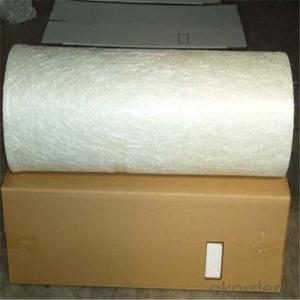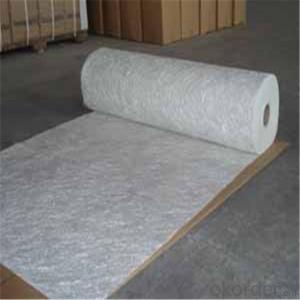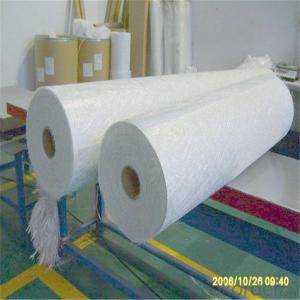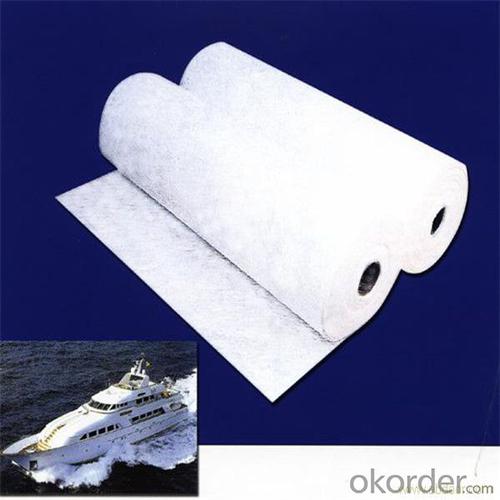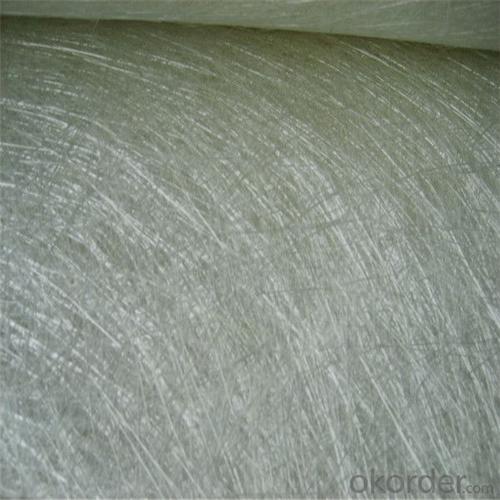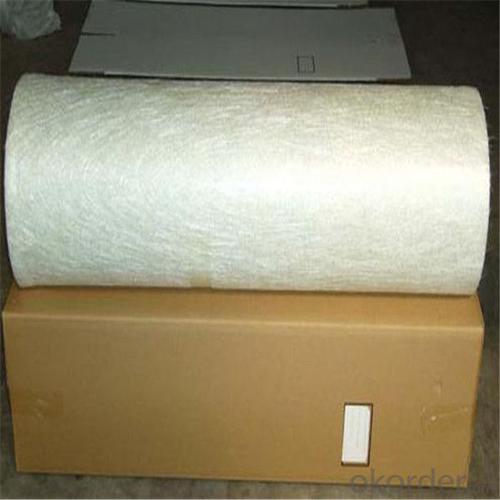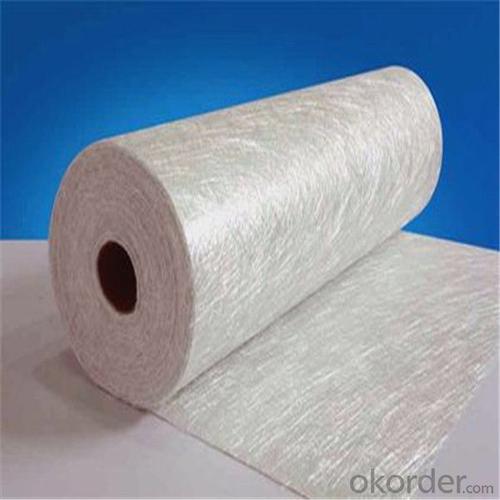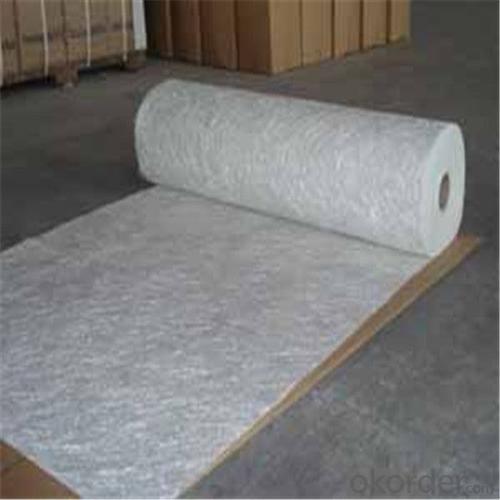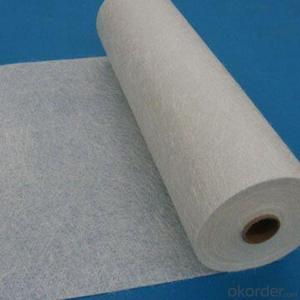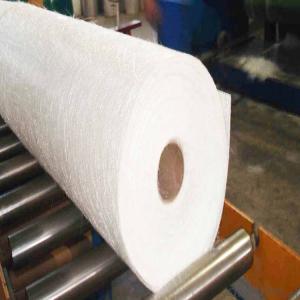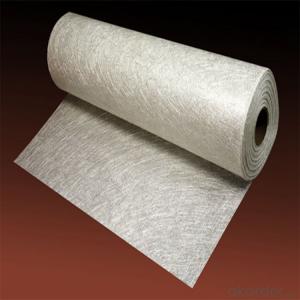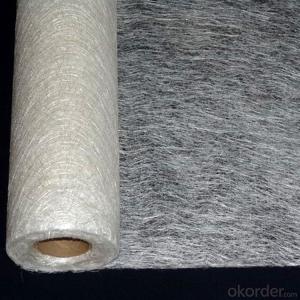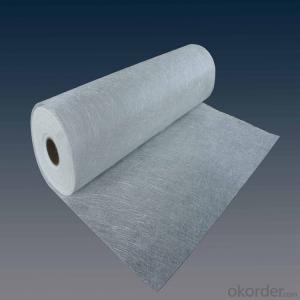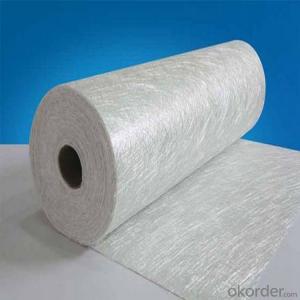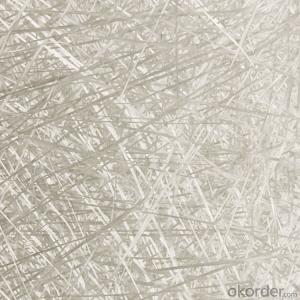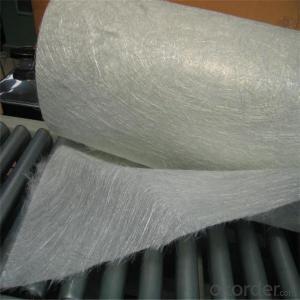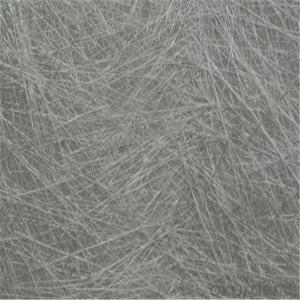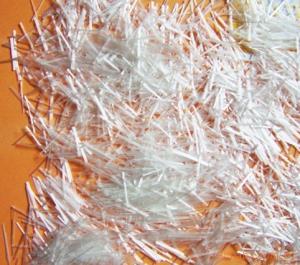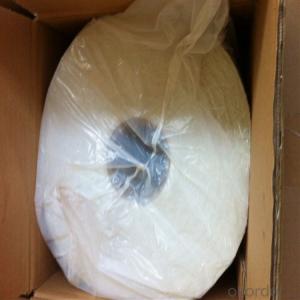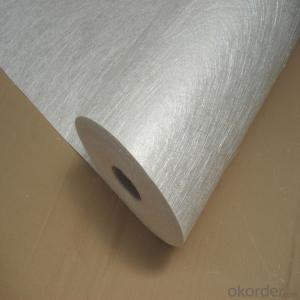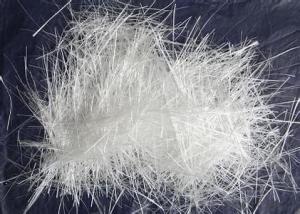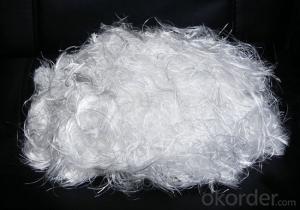Chopped Strand Fiberglass for Sale - Chopped Stand Mat for Fiberglass Boat Parts
- Loading Port:
- Tianjin
- Payment Terms:
- TT OR LC
- Min Order Qty:
- 100 m.t.
- Supply Capability:
- 20000 m.t./month
OKorder Service Pledge
Quality Product, Order Online Tracking, Timely Delivery
OKorder Financial Service
Credit Rating, Credit Services, Credit Purchasing
You Might Also Like
Quick Details
| Technique: | Chopped Strand Fiberglass Mat (CSM) | Dimensions: | 450gsm | Mat Type: | Continuous Filament Mat |
| Fiberglass Type: | E-Glass | Softness: | softness | Place of Origin: | Jiangxi, China (Mainland) |
| Brand Name: | cnbm | Model Number: | 450gsm | color: | white |
| fiberglass type: | E glass | product: | e-glass powder chopped stand mats | binder: | powder or emulsion |
| width: | 1040 or 1270mm, as your requirement | weight: | 30 or 45kg/roll | paper tube diameter: | 90mm |
| outer diameter of roll: | 256mm | packing: | plastic film+carton box + pallet |
Packaging & Delivery
| Packaging Details: | plastic film+carton box + pallet |
| Delivery Detail: | 15-20days |
Specifications
1.e-glass powder chopped stand mats
2.binder:power or emulsion
3.width:1040mm or 1270mm
4.weight:450gsm
Picture

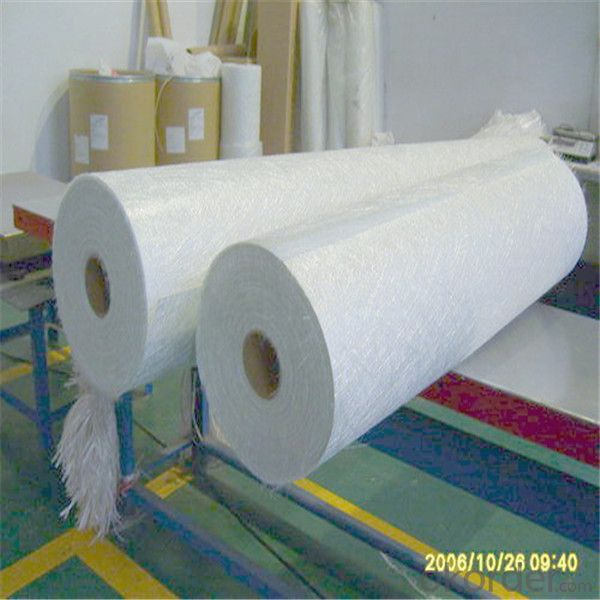

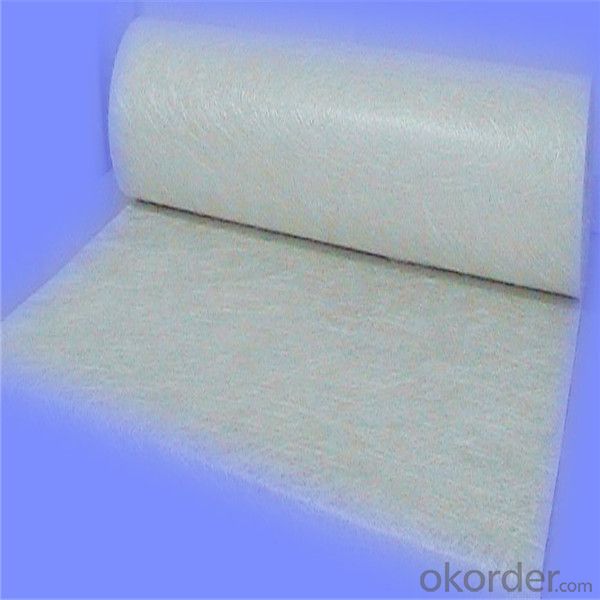

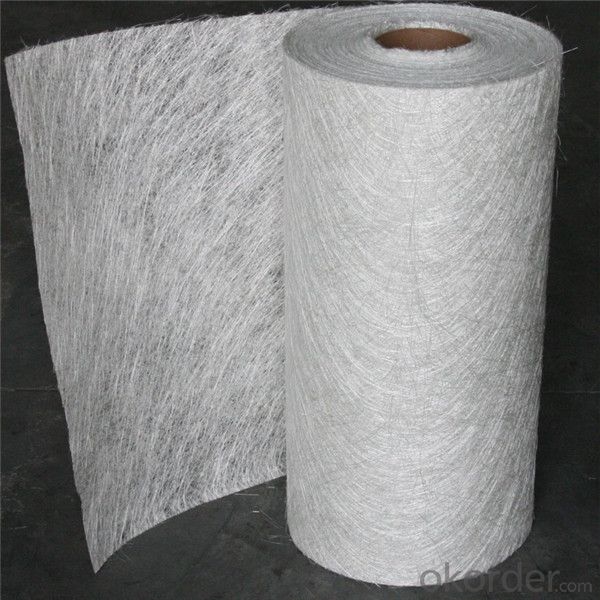
- Q: Is fiberglass chopped strand suitable for the production of playground equipment?
- Yes, fiberglass chopped strand is suitable for the production of playground equipment. It offers excellent strength, durability, and resistance to harsh weather conditions, making it a reliable material choice for playground structures. Additionally, fiberglass chopped strand can be easily molded into various shapes and designs, providing flexibility in creating customized playground equipment.
- Q: Is fiberglass chopped strand suitable for automotive applications?
- Fiberglass chopped strand is indeed suitable for automotive applications. This versatile material brings numerous advantages to automotive manufacturers. Its lightweight nature, coupled with its strength and durability, makes it the perfect choice for reducing vehicle weight while maintaining structural integrity. Automotive components such as body panels, interior trim, and underbody shields can all benefit from the use of fiberglass chopped strand. It offers outstanding resistance to corrosion, chemicals, and heat, ensuring that it performs exceptionally well in demanding automotive environments. Moreover, its ability to be easily molded into intricate shapes allows for design flexibility and customization. In conclusion, fiberglass chopped strand is a dependable and cost-effective solution for automotive applications.
- Q: How does the moisture absorption of fiberglass chopped strand impact its performance?
- The performance of fiberglass chopped strand can be significantly affected by its moisture absorption. Fiberglass is renowned for its exceptional strength, durability, and lightweight characteristics. However, exposure to moisture can result in various adverse effects. One of the major concerns regarding moisture absorption in fiberglass chopped strand is the potential degradation of its mechanical properties. The bonds between the glass fibers can weaken due to moisture, leading to a decrease in overall tensile strength and stiffness. As a result, the material's structural integrity can be compromised, making it more susceptible to deformation, cracking, or failure under load. Moreover, moisture absorption can impact the dimensional stability of fiberglass chopped strand. The fibers can expand as they absorb moisture, causing changes in the material's dimensions. This can lead to warping, distortion, or other alterations in shape, which can be highly detrimental in applications where precise dimensions are crucial. Additionally, moisture absorption can facilitate the growth of mold, mildew, or other microorganisms on the surface of fiberglass chopped strand. Not only does this compromise the material's aesthetic appearance, but it can also pose health risks in certain environments. To counteract these negative effects, manufacturers often apply protective coatings or treatments to enhance the material's resistance to moisture absorption. These coatings serve as barriers, preventing or minimizing the penetration of water and reducing the likelihood of damage. In conclusion, the moisture absorption of fiberglass chopped strand can have a detrimental impact on its performance, compromising its mechanical properties, dimensional stability, and potentially promoting the growth of microorganisms. Therefore, it is crucial to consider and address moisture-related issues when utilizing fiberglass chopped strand in various applications.
- Q: Does fiberglass chopped strand improve the wear resistance of composite materials?
- Fiberglass chopped strand has the ability to enhance the wear resistance of composite materials. Comprising of small, randomly oriented fibers, it is added to the composite matrix. These fibers augment the overall strength and durability of the composite, resulting in increased resistance to wear and tear. The remarkable tensile strength and mechanical properties of fiberglass chopped strand aid in distributing stress and impact forces evenly throughout the composite. This reduces the likelihood of surface damage and enhances its capacity to endure repeated use and abrasion. Moreover, the inclusion of fiberglass chopped strand can also bolster the stiffness and impact resistance of the composite, thereby further improving its wear resistance. Consequently, integrating fiberglass chopped strand into composite materials is an effective means of enhancing their wear resistance and prolonging their lifespan.
- Q: Does fiberglass chopped strand improve the thermal conductivity of composite materials?
- No, fiberglass chopped strand does not improve the thermal conductivity of composite materials. In fact, it can actually lower the thermal conductivity due to its insulating properties.
- Q: How does the surface treatment affect the properties of fiberglass chopped strand?
- The surface treatment of fiberglass chopped strand significantly affects its properties. The treatment enhances the adhesion between the fiberglass and the matrix material, such as resin, improving the overall strength and durability of the composite. It also reduces the tendency of the chopped strand to absorb moisture, increasing its resistance to environmental factors. Furthermore, the surface treatment can enhance the dispersibility of the chopped strand in the matrix, improving its mechanical and thermal properties. Overall, the surface treatment plays a crucial role in optimizing the performance of fiberglass chopped strand in composite applications.
- Q: Can fiberglass chopped strand be used in sporting goods applications?
- Yes, fiberglass chopped strand can be used in sporting goods applications. It is commonly used to reinforce various components in sporting goods such as hockey sticks, tennis rackets, golf clubs, and even surfboards. The fiberglass adds strength and durability to these products, making them more suitable for rigorous use.
- Q: Can fiberglass chopped strand be used in the production of lightweight panels?
- Yes, fiberglass chopped strand can be used in the production of lightweight panels. The chopped strands can be mixed with resin to create a composite material that is strong, lightweight, and durable, making it an excellent choice for manufacturing lightweight panels.
- Q: Can fiberglass chopped strand be used in the production of furniture?
- Furniture production can indeed utilize fiberglass chopped strand. This versatile material offers strength, durability, and resistance to various environmental factors, making it suitable for furniture applications. Chairs, tables, cabinets, and other furniture pieces can benefit from the incorporation of fiberglass chopped strand, as it enhances their structural integrity and longevity. To include this material in the manufacturing process, it can be used as a reinforcement material in the resin or plastic matrix utilized for constructing the furniture. This reinforcement significantly improves the overall strength and stability of the furniture, rendering it more impact-resistant and capable of bearing heavier loads. Moreover, fiberglass chopped strand can also serve as a filler material in upholstered furniture, providing additional support and enhancing the comfort of the seating. In conclusion, fiberglass chopped strand is an invaluable material for furniture production, enhancing its performance and durability.
- Q: How is fiberglass chopped strand used in the packaging industry?
- Fiberglass chopped strand is widely used in the packaging industry for various applications. One of the main uses of fiberglass chopped strand in packaging is as reinforcement material. It is commonly added to plastic packaging products to enhance their strength and durability. The chopped strands are typically mixed with the plastic resin during the manufacturing process, which helps to increase the overall structural integrity of the packaging material. This reinforcement property is particularly beneficial for packaging items that need to withstand external pressures, such as heavy loads or transportation. Additionally, fiberglass chopped strand is also utilized in the production of packaging molds. The strands are often incorporated into the mold material to provide reinforcement, preventing the mold from deforming or breaking during the production process. This ensures that the packaging molds maintain their shape and integrity, resulting in consistent and high-quality packaging products. Another significant application of fiberglass chopped strand in the packaging industry is for thermal insulation purposes. The chopped strands can be mixed with insulation materials, such as foam or polystyrene, to enhance their insulating properties. This is particularly useful for packaging products that require temperature control, such as perishable goods or pharmaceuticals. The fiberglass reinforcement helps to create a barrier that minimizes heat transfer, ensuring that the packaged items remain at the desired temperature for an extended period. In summary, fiberglass chopped strand is extensively used in the packaging industry to reinforce plastic packaging products, strengthen packaging molds, and enhance thermal insulation properties. Its versatility and ability to improve the strength and durability of packaging materials make it an essential component in the packaging manufacturing process.
Send your message to us
Chopped Strand Fiberglass for Sale - Chopped Stand Mat for Fiberglass Boat Parts
- Loading Port:
- Tianjin
- Payment Terms:
- TT OR LC
- Min Order Qty:
- 100 m.t.
- Supply Capability:
- 20000 m.t./month
OKorder Service Pledge
Quality Product, Order Online Tracking, Timely Delivery
OKorder Financial Service
Credit Rating, Credit Services, Credit Purchasing
Similar products
Hot products
Hot Searches
Related keywords
